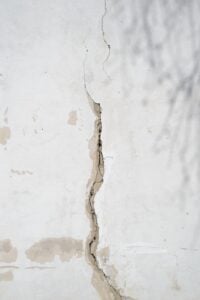Foundation Strong: Essential Maintenance Tips for Homeowners
Table of Contents
ToggleYour home’s foundation is the base that supports everything above it. A strong foundation keeps your walls, floors, and roof secure, while a weakened one can lead to cracks, uneven floors, leaks, and even structural instability. Many homeowners don’t think about their foundation until problems arise, but by taking preventive measures, you can protect your investment and avoid costly repairs. Here are practical maintenance tips every homeowner should follow to keep their foundation strong for years to come.
1. Maintain Proper Drainage Around Your Home
- Water is one of the biggest threats to your foundation. Poor drainage allows rainwater to pool around the base of your home, leading to soil expansion, erosion, and hydrostatic pressure that pushes against the foundation walls. Over time, this can cause cracks, leaks, or even bowed walls.
To prevent this, ensure your gutters and downspouts are functioning properly and directing water at least 5–10 feet away from the foundation. Keep gutters clean to avoid overflow, and consider adding extensions or French drains if your property tends to collect water near the house.
2. Inspect for Cracks and Repair Them Early
- Small cracks in your foundation may seem harmless at first, but they can quickly escalate into bigger problems if left unaddressed. Water, pests, and even shifting soil can make tiny cracks worse over time.
Walk around your home regularly and check both the interior and exterior foundation walls for any signs of cracking. Hairline cracks can often be sealed with specialized sealants, but a professional should always inspect wider cracks. Early repairs are always less costly than waiting for the damage to escalate.
3. Keep Soil Moisture Consistent
- Your foundation sits on the soil, which expands when wet and contracts when dry. Extreme changes in soil moisture can cause the foundation to shift or settle unevenly. This is especially common in areas with clay-rich soils that swell significantly during rainfall and shrink during dry spells.
To prevent this, try to maintain consistent soil moisture around your foundation. During long dry periods, water the soil evenly around your home, but avoid overwatering. On the other hand, during heavy rain, ensure that water is directed away from your foundation through proper drainage.
4. Watch Out for Tree Roots
- Trees planted too close to your home can harm your foundation in two ways: their roots can physically disrupt the soil beneath your house, and they can also draw out too much moisture, leading to soil shrinkage. Both can destabilize your foundation.
When landscaping, plant large trees at least 15–20 feet away from your house to avoid potential damage. If you already have trees near the foundation, consider installing root barriers or consulting with an arborist to minimize the risk of damage. Regular maintenance of shrubs and smaller plants near your home is also important to prevent moisture buildup against foundation walls.
5. Ensure Proper Grading Around Your Property
- The slope of your yard determines where rainwater flows during a storm. If your yard slopes toward your home, water will naturally settle near the foundation, increasing the risk of damage.
Check the grading around your home to make sure the ground slopes away from your foundation by at least 6 inches over the first 10 feet. Re-grading your yard may seem like a big project, but it can significantly reduce foundation stress and protect your basement or crawl space from water intrusion.
6. Maintain Your Basement or Crawl Space
- If your home has a basement or crawl space, these areas often provide early warning signs of foundation trouble. Look for dampness, water stains, musty odors, or uneven floors. These symptoms often point to water infiltration or foundation movement.
Installing a sump pump, vapor barrier, or waterproofing system can help keep these areas dry and prevent water from putting additional pressure on your foundation. Regular inspections by a professional can also catch issues before they become serious.
7. Don’t Ignore Warning Signs
- Your home may be sending you signals that the foundation is under stress. Cracks in walls, sticking doors and windows, sagging floors, or visible foundation cracks are all warning signs that should never be ignored. Acting quickly when you notice these problems can save you from costly and potentially major structural repairs down the road.
Conclusion

- Your foundation is the backbone of your home, and maintaining its strength requires consistent attention and care. By managing water drainage, maintaining soil moisture, inspecting for cracks, and staying proactive about repairs, you can protect your home from foundation issues. Regular maintenance may seem small compared to the damage water and soil movement can cause, but it makes all the difference.
For homeowners seeking lasting peace of mind, a professional repair and waterproofing expert will keep your foundation strong, safe, and built to last.
Our experts at Crack-X will inspect your property and take the right steps to fix your foundation. Crack-X is a civil structure foundation repairs company proudly serving Maine and New Hampshire. We fix foundation cracks using trusted methods and quality materials to ensure long-lasting results. Whether you’re dealing with minor cracks or need help deciding between foundation repair vs foundation replacement, our team is here to help. Call us today at (877) 727-2259 for a free consultation.

